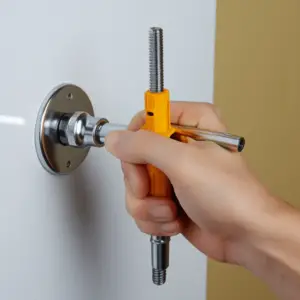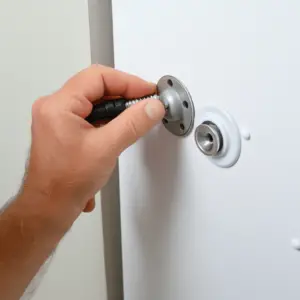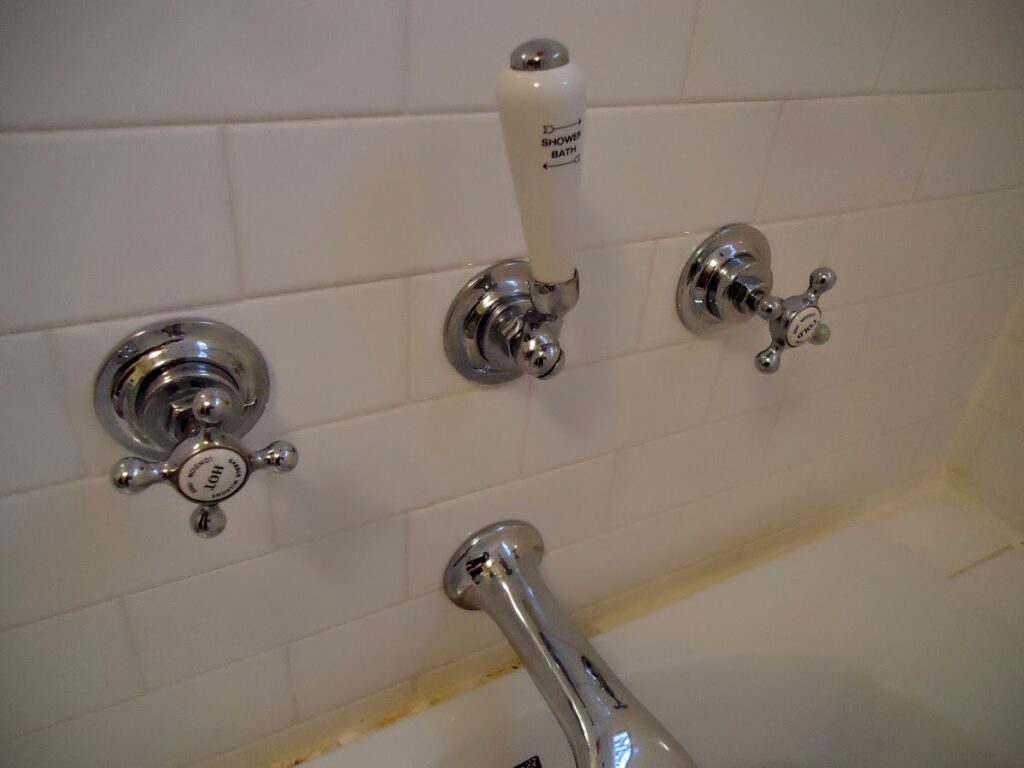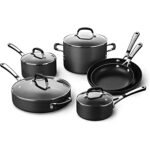Removing Stuck Shower Handle Screws, Have you ever experienced the frustration of a stuck shower handle screw? When the handle seems to be working but is not movable.
If your shower handle is stuck or not working properly, it’s important to know how to remove a stuck shower handle screw. This is only possible if you’re equipped with the knowledge of how to remove a stuck screw. We will be sharing with you all the basics of removing a shower handle screw and providing great tips to help you remove any kind of screw easily.
Table of Contents
What Tools Do You Need?

To remove a stuck shower handle screw with a flat head screwdriver, you’ll need:
- A flat head screwdriver (The size of the screw depends on the size of your shower handle)
- A pair of pliers or a wrench
- A lubricant (if necessary)
How to Remove Stuck Shower Handle Screw
A stuck shower handle screw is one of the most frustrating problems to encounter. Fortunately, it’s also an easy fix. Here’s how to remove a stuck shower handle screw:
Inspect for Damage
Know the problem and how to fix it. Look at the stuck screw and figure out why it’s stuck. Loosen some nuts or screws holding down your old shower handle and inspect for damage or rust. Note how much force was needed to remove the problem after identifying it.
Based on this information, make a new plan and decide how to continue. Replacement loose or rusty screws as soon as possible before they become too hard to access with an Allen wrench or hex key set.
Turn Off The Water at The Shower Valve
The second step in removing a stuck shower handle screw is to turn off the water to the faucet. This stops the flow of water from the faucet and makes it easier to remove the screw.
Make sure that you have a towel or rag ready to catch any drips of water that might come out of the shower head while you’re working on removing Removing Stuck Shower Handle Screws.
Clean the Screw Head
If your shower has been exposed to water for a long period of time, then there is a chance that corrosion has taken place on your hardware. Corrosion can cause debris to get trapped inside an object over time, which will make it difficult for you to remove the object when it becomes stuck. If this is the case with yours, then inspect the pieces carefully before attempting to remove any screws from them again.
If you’re removing screws that have been in place for a while, they may be dirty or corroded. To clean them, use rubbing alcohol and a cotton swab or toothpick. Apply the alcohol on one side of the screw head and then turn it until all sides are clean. Repeat this process for other screws in your shower if necessary.
Remove any soap or other debris from around the handle by using a clean rag or cloth.
Make sure that you are wearing rubber gloves and safety goggles to protect your eyes from splashing water or dust particles while removing the handle screws.
Remove The Screw With Your Screwdriver

Grip the handle tightly, then loosen it with a screwdriver. If you’re unsure how tight to turn it, loosen it using the Allen key until the handle turns freely.
Loosen the handle screws with a screwdriver without damaging them or your project’s threads. If your fingers can’t reach them, use pliers or an adjustable wrench to loosen them. Once loose, completely detach and remove them from the shower handle.
You can cover your hand with a towel and turn the screw counterclockwise with your other hand while twisting it in place with your first until you can grab it with pliers or vice grips. Instead of pliers or vice grips, use a line wrench to grip the screw firmly enough to turn it without needing them later to remove it from its mounting studs in your shower wall or other mounting surfaces.
Lubricate The Stuck Screw
Lubricate the screw with a dab of WD-40 or other lubricant and hit it lightly with a hammer, being careful not to break off any screws on the handle. Repeat if necessary until it comes out easily, then use your fingers to loosen and remove it from the handle.
Spray WD-40 on all rusty parts that need lubrication and then clean them with soap and water or a solvent such as acetone or alcohol (do not use ammonia).
You can then replace the new handle with the same type or size of screw that came with it. Be sure to tighten it as much as possible and ensure that it is secure but not too tight so you can still turn it.
Final Thoughts
You can never be too careful when it comes to your shower. The screws on the handles are a common source of water leaks, and freezing temperatures can cause the handle to become slippery and nearly impossible to turn. Proper installation is paramount so that you will not face these issues in the future.
When a shower handle won’t come off, you can try the following: Break off the head of the screw with a hammer and a punch. Grasp the shower handle and pull it to release it from the wall.
Turn off the water at your main valve, then turn on your hot water faucet. The pressure from this will help break loose any hard-to-remove screws or bolts.
Removing Stuck Shower Handle Screws that doesn’t work, you may need to remove some of the surrounding wallboards to gain access to the screw. If you don’t feel comfortable doing this yourself, call a professional for help.


